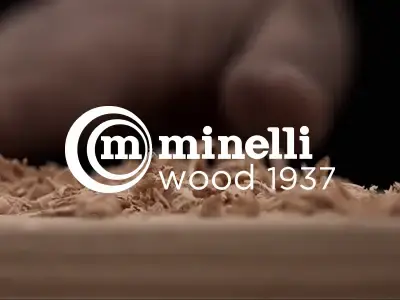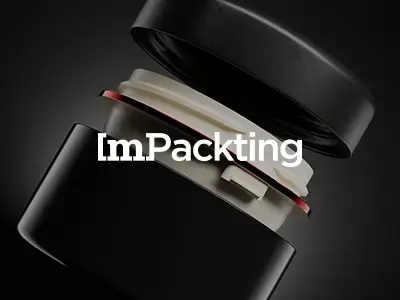In knife design, the handle forms part of the product's core identity.
When the handle is made of wood, this identity becomes even more tangible. Wood adds warmth and material depth, as well as a sense of precision that synthetic alternatives often lack. For this reason, choosing the right type of wood is about more than just aesthetics.
A suitable wood for knife handles must meet demanding criteria such as durability, workability, moisture resistance, and compliance with food-contact safety standards.
Not all woods behave the same. Let’s see what makes a good wood for knife handle applications, which species deliver the right mix of performance, safety and aesthetics and how thoughtful selection can transform a simple tool into something truly memorable.
What makes a wood suitable for knife handles?
The key is to understand how the material will behave. A good wood must strike the right balance between durability, safety, workability and aesthetic appeal.
Here are the key properties to consider:
- Dimensional stability: the wood must resist warping, cracking or swelling due to changes in temperature or humidity. This ensures long-term comfort and structural integrity;
- Grain direction and density: a tight, even grain provides aesthetic uniformity and mechanical strength. It also reduces the risk of splintering during shaping and sanding;
- Resistance to moisture and wear: in kitchen or outdoor knives in particular, the wood must tolerate frequent handling, possible exposure to water and constant mechanical stress;
- Surface compatibility: the material must respond well to finishing processes, such as oiling, sealing or polishing, to ensure the final surface is smooth, hygienic and durable;
- Food-safety compliance: for knives intended for culinary use, the wood and finishes must comply with food contact regulations (FDA and EU standards), particularly if untreated wood is to be avoided.
READ ALSO:
The reasons to offer wooden handle kitchen knives
What is the best wood for handles?
The best woods for premium knife handles
Selecting the right wood involves balancing aesthetics with long-term performance. Some species consistently stand out for their ability to combine safety, machinability, and visual appeal, especially when shaped into knife handles intended for daily use:
- Walnut, rich in colour and naturally low in porosity, walnut provides a smooth surface and a stable structure that resists warping. It’s ideal for designs that emphasise warmth and refined detail;
- Maple has a light hue and fine grain, making it both hygienic and easy to shape. Its resistance to moisture and uniform texture make it a safe and versatile base for engraved or minimalist designs;
- Ash is lightweight yet strong, and can handle shock well and be shaped precisely. When sealed with food-safe finishes, it becomes a visually clean and durable option suitable for brands seeking resilience and design flexibility.
If you would like to find out more about different types of wood for handles, including exotic and stabilised varieties, check out our in-depth article.
Exotic hardwoods: beauty with caution
Exotic species such as ebony, cocobolo and rosewood are often chosen for their dramatic visual impact and exceptional density. However, they have their drawbacks. Many contain high levels of natural oils that can complicate the finishing process, and some can cause skin irritation if not properly sealed.
Sourcing is another consideration: not all exotic woods are certified or sustainably harvested and certain species may be subject to local trade restrictions.
If used, these materials should be selected with careful attention to traceability, compliance and end-user safety. They are often best suited to collector's items or small-batch production.
Beyond materials: how knife handles are engineered

Even the finest wood species can only achieve so much without the right engineering. At Minelli, we design knife handles that perform reliably in real-world conditions.
Every handle is the result of a series of precise technical choices aimed at maximising comfort, durability and long-term usability. These are:
- Internal balance and weight distribution, carefully calculated to ensure a secure, fatigue-free grip during prolonged use;
- Moisture-resistant joints and surface treatments to help preserve structural integrity and hygiene over time;
- Ergonomic shaping and edge detailing for a comfortable and safe hold that adapts naturally to the user’s hand.
By combining material knowledge with design engineering, we help brands create beautiful handles that are built to last.
Handle construction: glued, detachable or engineered?
The way in which a knife or utensil handle is assembled directly impacts performance, safety and ease of use, especially in professional kitchens where hygiene and maintenance are of the utmost importance.
At Minelli, we offer a range of construction methods to meet various technical and functional requirements, including classic glued systems and advanced detachable designs.
Here are some of the main solutions we provide:
- Fixed glued scales: two wooden scales are inserted and glued into a slot milled into the metal body of the utensil. The gluing interface step is integrated directly during profiling, allowing for clean aesthetics and secure adhesion without the use of rivets;
- Unscrewing system: for rotosymmetric handles, we offer a detachable system with a threaded bushing that allows the wooden handle to be easily removed. This solution is compatible with any metal component featuring a threaded section and is ideal for professional tools requiring a dishwasher-safe design;
- Button release system: this system facilitates extraction with a button and lever mechanism supported by dedicated springs. The button release system facilitates extraction with a button and lever mechanism supported by dedicated springs. Minelli supplies the wooden components and technopolymer button systems, and collaborates with clients on metal part assembly.
Develop your next knife handle collection with Minelli
At Minelli Group, we support kitchenware and knife producer in translating natural materials into precision-crafted components that combine performance, aesthetics and safety. Thanks to our experience with premium woods, we are a trusted partner for projects that demand more than just functionality.
From co-design to large-scale production, we collaborate with your team to select the ideal material, shape and surface treatment for each application. Whether you're developing a new product line or enhancing an existing one, we can help you transform raw wood into a distinctive element of your brand identity.
Find out more at wood.minelligroup.com.







